The ancient Egyptian civilization can be traced back to approximately 3000 BC and it lasted until 30 BC when it became part of the Roman Empire. Its long duration shows that the civilization was provided with all necessities, such as a good natural environment including water, fish, fertile soil and plants, but also with rich architecture as seen in the pyramids which required the use of accurate measurements and mathematics, and durable materials.
When we speak about Egypt, many things could come to mind: the beauty of Cleopatra, or maybe the glorious mask of Tutankhamun. Some of you may also think about the pictorial writing system known as hieroglyphics, which were found carved and written on many different surfaces such as papyrus, stone, and wood. So as you can see, for many years, the ancient Egyptians thrived.
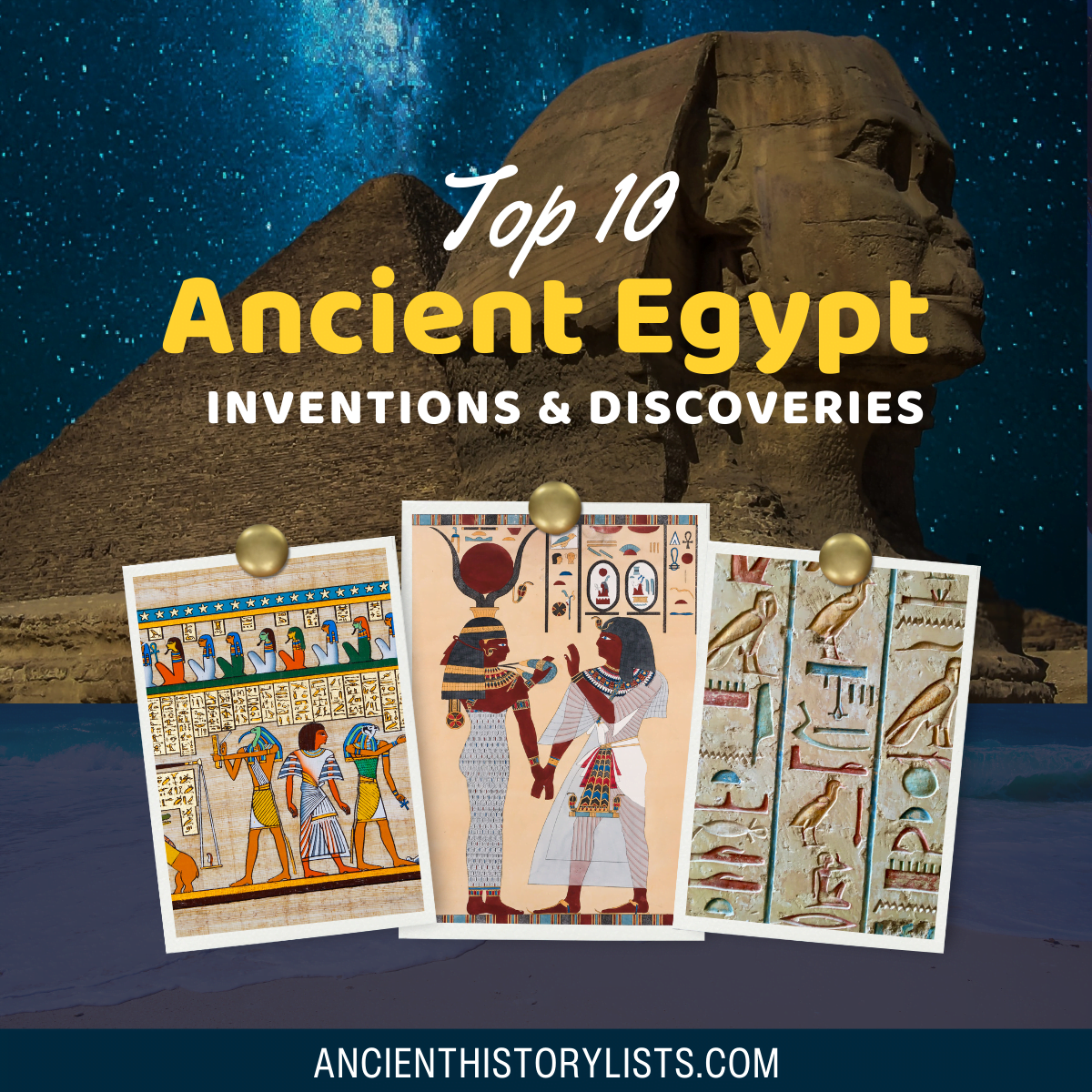
Let’s have a look at some of the main ancient Egyptian inventions that people are most curious about:
10. Mathematics
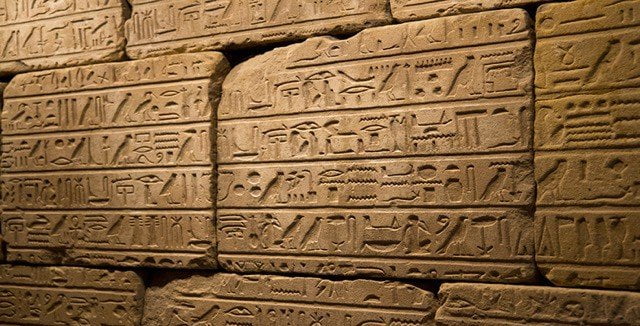
In history books, the Greeks often take the credit for inventing mathematics. They were skilled in mathematics and astronomy, but the truth is, they learned it from the Egyptians. The main difference is that Egyptian geometry and arithmetic were primarily used for practical applications: measurements, business transactions, how to construct pyramids, and cut rocks. Mathematics was not seen as a theoretical science.
In Egyptian schools, the curriculum included sports but for those intending to pursue further education, the emphasis was placed on writing (to train the character) and mathematics. It is thought that the Egyptians introduced the earliest basic numeration system of 10 numbers as early as 2700 BC and maybe even before.
The oldest mathematical text from ancient Egypt is the Moscow Papyrus, discovered around 2000 BC. The ancient Greeks later developed and improved upon what the Egyptians had invented.
9. Calendar and Clock
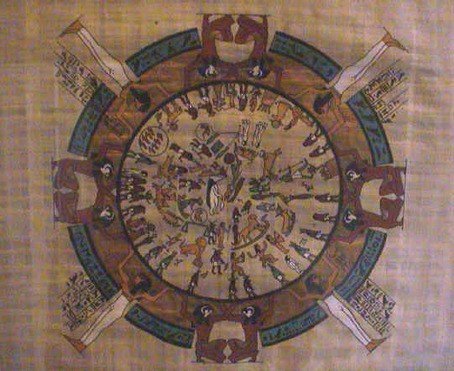
The Egyptians divided time into three main periods: the inundation season (akhet), which lasted for one-third of the year; the sowing and growth of the crops (perit); and the harvest (shemu). These three seasons each consisted of 120 days and made up one calendar year. To mark the beginning of each year, they chose the rising of the Dog Star, visible to the naked eye. After some time, it became evident that the calendar was short, but the start of the civil year coincided with the beginning of the agricultural year.
The Egyptians were among the first to divide their days into parts. Obelisks – slender, four-sided monuments – were used as sun clocks from 3500 BC and their moving shadows enabled people to separate the day into parts, starting at noon.
Later on, they invented the first portable shadow clock which was so lightweight that people could carry it with them. A rod was marked with 12 sections and a shadow of the rod would tell you what time it was. In addition, records and historical documents were kept of each king’s reign.
8. Government
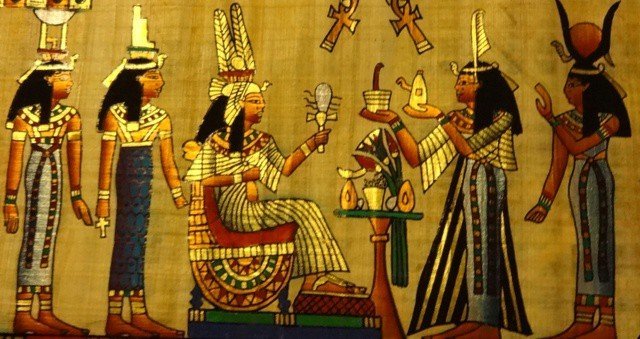
Ancient Egypt was a country ruled by law, but it was also ruled by one man only, the centralized figure of the pharaoh. The pharaoh was even higher than a king as he was seen as a living god. Pharaohs received the divine right to rule and their coronation made them the incarnation of god. Theoretically, they owned all the land and the people. However, they were wary not to offend the goddess of truth, Ma’at, because even the pharaoh was subject to her power. Their sole responsibility was to maintain universal harmony in the country.
Compared to other ancient civilizations, Egypt was the least warlike country in the ancient world. Its geography and natural resources provided protection and food, so there was no professional army for a long time.
Pharaohs were the leaders of the people in every aspect of their lives – political, religious, etc, and there was no need for military power. More important than anything else was the religious aspect of their rule. People were willing to follow them in order to achieve greatness in the afterlife. A pharaoh’s resurrection after death and continuation as a god in the next world was of crucial importance for the survival of Egypt.
7. Library
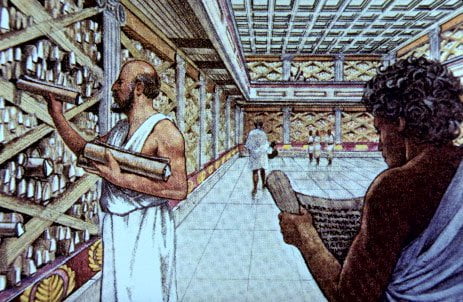
The most famous ancient library was the Royal Library of Alexandria in Egypt. It was one of the largest and most significant libraries of the ancient world, dedicated to the Muses, the nine goddesses of the arts. Although the library is not an invention per se, it was hugely important for the collection of all the knowledge of antiquity in one place.
It was founded in Alexandria around 300 BC, by Ptolemy I Soter, who ruled Egypt after the death of Alexander the Great. Its aim was to establish a center of learning and gather all known information about the outside world in one place. It contained more than a million papyrus scrolls on the subjects of literature, history, law, mathematics, and science.
6. Wine
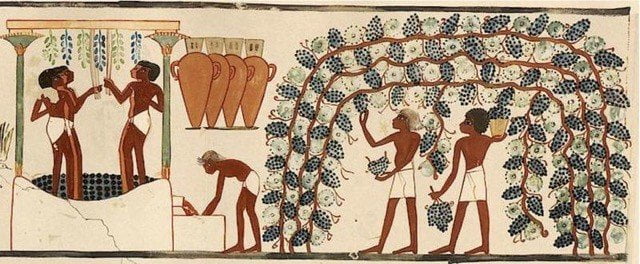
Wine was a very popular drink in ancient Egypt. The Egyptians may not have been the first to invent it, but there is artwork from that time showing their manufacturing processes, which were very similar to the ones we have today.
Grapevines were carefully cultivated and supported by wooden pillars. The grapes were picked and put into baskets, where five or six men pressed them with a wooden implement designed to leave the juice behind.
Finally, the wine was kept in big ovens made of clay and large pottery jars. In was usually kept in cellars, together with oil and food. Barrels were also made for the Egyptian tombs as a symbol to keep the body nourished.
There is a myth that the lotus flower could produce a strong narcotic potion when mixed with wine. Wine was exported from Alexandria down the Nile which was used as a trading route, also transporting other goods such as silverware, bronze, pottery, and oil.
5. Cosmetics
Wealthy Egyptians enjoyed a sophisticated lifestyle that reflected their social class, so they devoted a lot of time to their personal appearance. Wigs were often worn not only for style purposes but also as protection as people needed to protect their skin from the dry climate and strong sun.
The Egyptians were also famous for their perfumes made from, for example, the oil of lilies. Body and facial hair was removed with razors or depilatory creams. It is interesting that both sexes used make-up and wigs.
For make-up, the Egyptians used three kinds of eye paint. The most famous were black kohl, malachite (green ore of copper), and galena (dark gray ore of lead) for the eyes. Red ocher was used as rouge and, when mixed with oil, as a lip-gloss.
It is no surprise that when it came to beauty, Cleopatra was known as one of the most beautiful women in history. Many of her secrets are still used today, for example, apple cider vinegar as a face toner, milk and honey baths to soften the skin, aloe vera for moisturizing, natural henna for nail color, almond oil for younger skin, and honey for silky hair.
The Egyptians also made the first recipe for toothpaste that included eggshell powder (which wasn’t very pleasant), as well as the first breath mints made out of cinnamon boiled with honey, pine, and berries. One more thing: the Egyptians adored jewelry. We have already mentioned the magical charms that they used to protect themselves against disease, accidents, and natural disasters. Archaeological discoveries of royal jewelry, such as the treasure of the queens and princesses, cannot be equaled today.
4. Mummification
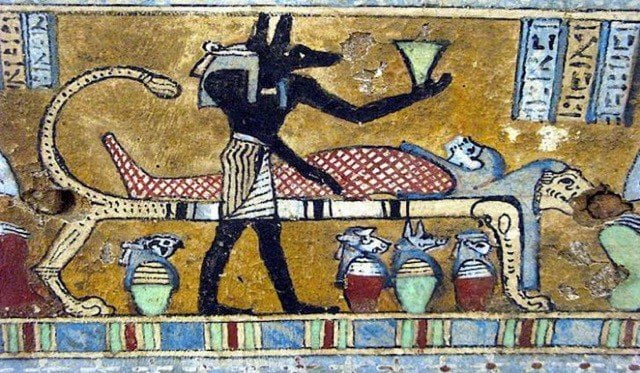
The ancient Egyptians believed in many gods and goddesses, and they also strongly believed in the afterlife. So, when a pharaoh died, his ka or life force would leave his body, but only temporarily. The ba, on the other hand, was a person’s spirit. It was important to preserve the body because the spirit would return. To make this happen, the ancient Egyptians created a process called mummification, with the aim of preserving bodies from decomposing after death.
All the internal organs were carefully removed and kept in jars with palm oil and water, all except the heart which was believed to be the essence of the person. Each organ had a different jar, and there were four in total: one for the stomach, one for the intestines, one for the lungs, and one for the liver. These were the important organs. They were put back into the body after being washed, dried and wrapped. The jars were kept next to the body.
After the process, the bodies were wrapped in linen and placed in special tombs in the pyramids. They were placed together with hidden charms, called amulets, to protect them from evil. There is a myth that all the tombs had curses which would affect anyone who entered. The most famous mask of a mummy belonged to King Tut, also known as Tutankhamun, and was discovered in 1922.
3. Medicine
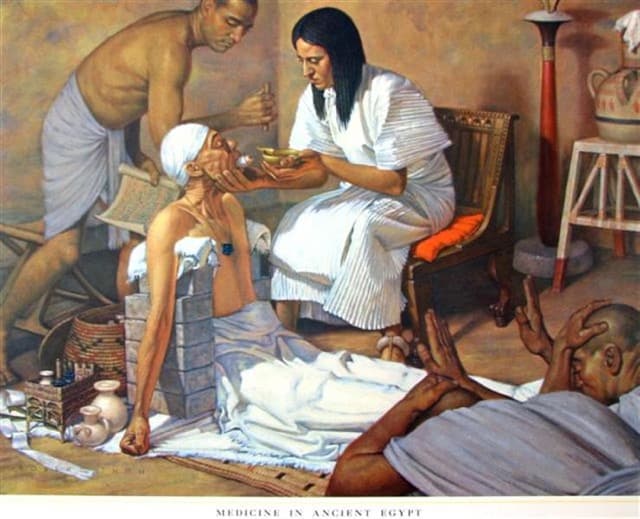
The Edwin Smith Papyrus is a medical text on surgery from ancient Egypt written around 1600 BC. It shows that the Egyptians invented medical surgery, predating the Hippocratic Oath by a thousand years. It describes surgical cases of head, neck, and chest injuries and includes a list of instruments used during surgery.
The first instruments were found within the tomb of Qar, who was known as “the physician of the palace and keeper of the secrets of the king.” Ancient Egypt was also known to be the starting point of neuroscience.
Egyptian medicine was a mixture of magical and rational treatments. Both methods were equally valid: when the cause was visible and objective, scientific treatments were used and when the cause was hidden (and could be a punishment from the gods or the ill wishes of enemies), magic was employed. Everything was based on the Egyptians’ great knowledge of anatomy as a result of mummification.
2. Hieroglyphs
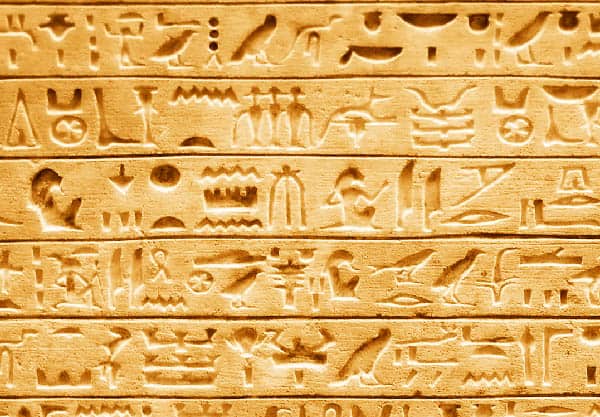
Archaeological discoveries suggest that Egyptian hieroglyphs may be the oldest form of writing, dating from around 3300 BC. Along with the Mesopotamians, the Egyptians were the first people to develop their language into a codified form of writing. The earliest forms were pictures.
Although their writing changed over time, they deliberately preserved the hieroglyphic pictures in their original forms. Papyrus sheets were the earliest materials used as paper, as well as stones and wood. Mixed vegetable gum and beeswax were used to make black ink for writing.
Papyrus was exported all around the Mediterranean, the Roman Empire and the Byzantine Empire. A milestone in history was the discovery of the Rosetta Stone in the Nile delta during Napoleon Bonaparte’s expedition to Egypt in 1799. Its impact on deciphering the hieroglyphs was crucial.
1. Pyramids
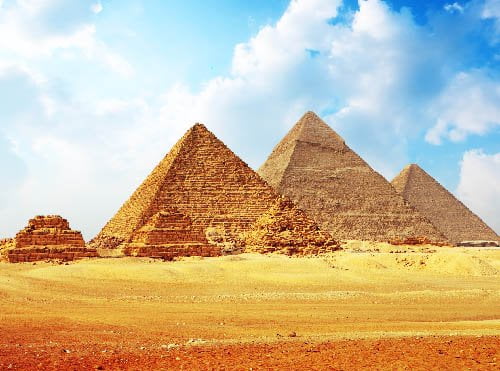
The ancient pyramids are definitely at the top of the list of ancient Egyptian inventions. They are among the most astonishing structures in the world and are solid geometrical shapes with a square base and four equal triangular sides. They were built primarily as tombs for the kings and religious temples. They were located away from major cities and took decades to build.
The Great Pyramid of Giza, built around 2600 BC, is also known as the Pyramid of Khufu, or the Tomb of Queen Hetepheres, and is the largest existing pyramid. The primary burial chamber (the King’s Chamber) contained the sarcophagus that held Khufu’s body, and the walls were covered with hieroglyphs depicting various aspects of Egyptian life as decoration.
There were also weight-relieving chambers to prevent the pyramid from collapsing, a gallery with large passageways connecting the chambers, and air shafts which also served as exits.
This countdown is super amazing…It has doubled my passion to want to study the “Early Egyptian Civilisation”.
I love reading about ancient Egypt. But knowledge should be well rounded. I majored in history in college and antiquity has always been of great interest to me. So why not start at the beginning. Egypt is the name given by the Greeks. Why not call Egypt by its original name which is KEMET on occasion. Why not mention all the races and ethnicities that have attributed to the greatness of KEMET- Egypt. Persons of lesser knowledge would think that the only people relevant to Egypt past and present are the Hyksos, Hebrews and arabs. Why not mention that it was the crown jewel of ALKEBULAN b4 it was called AFRICA after the Latin soldier Africanus who fought his military campaigns in northern Africa. Just a thought.